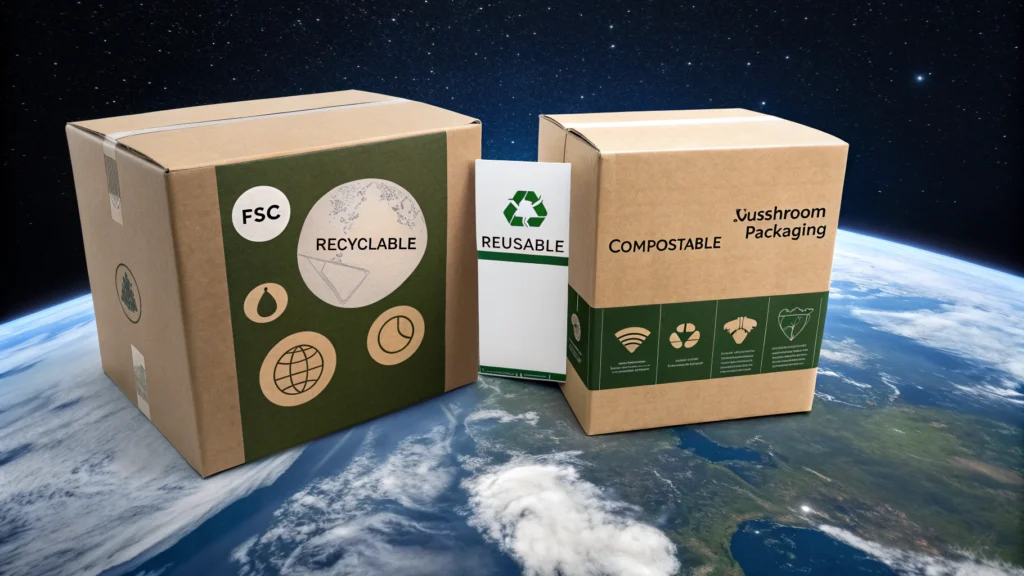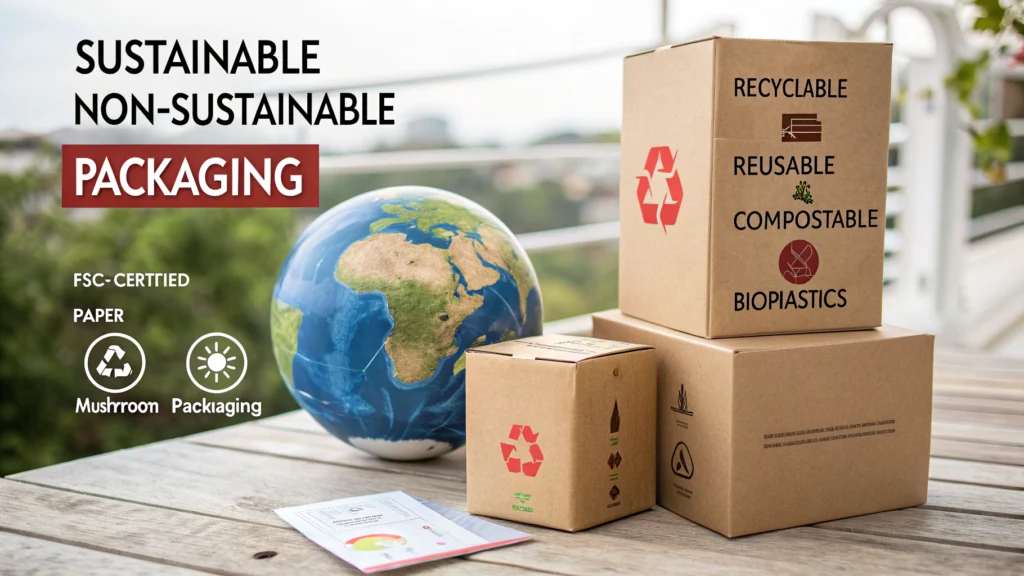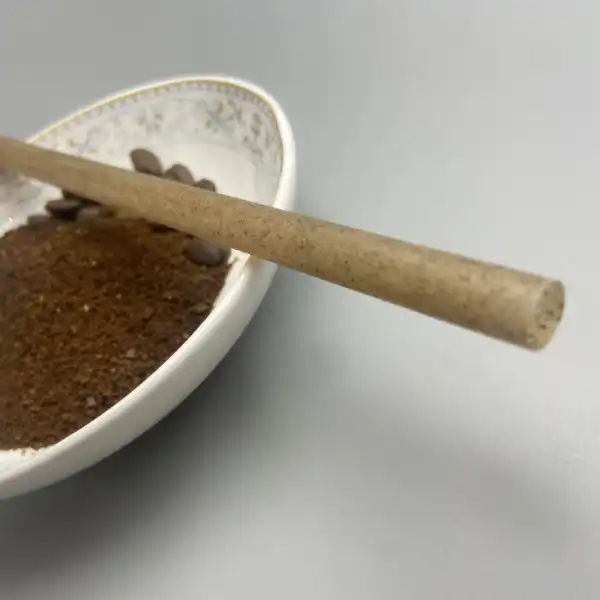Hey there! Have you ever stopped to think about all the packaging we use every day? It’s kind of crazy, right? Did you know that online searches for sustainable goods have increased by 71% in the last five years? It’s clear that we’re all becoming more aware of our impact on the planet, and that includes the packaging that comes with our favorite products. It’s not just about quality and price anymore; we’re looking for brands that share our values and are committed to sustainability. That’s why I wanted to put together this guide, to help you understand what sustainable packaging is all about and how you can make a difference, whether you’re a business owner or just an eco-conscious shopper.
Understanding Sustainable Packaging

What is Sustainable Packaging?
So, what exactly is sustainable packaging? Well, it’s all about creating packaging solutions that are earth-friendly and don’t contribute to the further depletion of our planet’s natural resources. It’s not just about the materials themselves, but also about the whole lifecycle of the packaging, from where it comes from to how it’s disposed of. Think of it as a cradle-to-grave approach. We want to make sure that our packaging has the smallest environmental footprint possible, from start to finish.
The Three Main Categories of Sustainable Packaging
When we talk about sustainable packaging, it generally falls into three main categories:
- Recyclable Packaging: This is probably the most common type. It includes materials like cardboard and certain plastics that can be reprocessed into new products. Think about those cardboard boxes you get your online orders in – they can be recycled and turned into something new.
- Reusable Packaging: These are containers that can be used multiple times, and that can really cut down on waste. Things like glass containers and refillable bottles fit into this category.
- Compostable Packaging: This is where things get really cool. Compostable materials are made from organic stuff that breaks down naturally over time. Think plant-based packing peanuts and mailers.
Key Criteria for Sustainable Packaging
The Sustainable Packaging Coalition (SPC) has a list of criteria that sustainable packaging should meet:
- It should be beneficial, safe, and healthy for individuals and communities throughout its lifecycle.
- It needs to meet market criteria for performance and cost.
- It should be sourced, manufactured, transported, and recycled using renewable energy.
- It should optimize the use of renewable or recycled materials.
- It should be manufactured using clean production technologies and best practices.
- It should be made from materials that are healthy throughout the life cycle.
- It should be designed to optimize materials and energy use.
- It should be effectively recovered and utilized in biological or industrial closed-loop cycles.
The Benefits of Sustainable Packaging
So, why should we even bother with sustainable packaging? Turns out, there are a ton of great reasons!
Environmental Advantages
- It reduces landfill waste and pollution.
- It conserves natural resources.
- It lowers your carbon footprint.
- It minimizes greenhouse gas emissions.
- It protects ecosystems and wildlife.
Business Advantages
- It increases customer loyalty and boosts your brand’s reputation.
- It attracts new customers who value sustainability.
- It reduces shipping and storage costs with smaller, lighter packaging.
- It helps you stay ahead of regulations and avoid penalties.
- It improves operational efficiency and reduces waste.
Sustainable Packaging Strategies: A Practical Guide

Okay, let’s get into the nitty-gritty. How can you actually make your packaging more sustainable? Here are some great strategies:
Design Your Packaging Intelligently
- Reduce Packaging Size: A lot of the time, we’re shipping a whole lot of air. The average box is 40% too big for its contents. By reducing your packaging size, you use less materials, lower your environmental impact, and reduce costs. Smaller packages also mean you can ship more at once, cutting down on emissions and costs.
- Know Your Product’s Carbon Footprint: Understanding the environmental impact of your product from start to finish is crucial. You can use tools like Impact Engine to get a better estimate and make better design decisions.
- Reduce Waste with Virtual Sampling: Instead of making tons of physical prototypes, use digital tools to visualize your packaging designs. This reduces waste, saves time, and cuts costs.
Choosing More Sustainable Materials
- Source Renewable Materials: Look for packaging made from paper and card-based products that are certified by the Forest Stewardship Council (FSC). This means they come from responsibly managed forests. Also think about innovative materials like mushroom packaging (mycelium) and seaweed.
- Opt for Recycled Plastic Over Virgin Plastic: If you need plastic, go for recycled options. It takes up to three times less energy to create than virgin plastic.
- Use Eco-Friendly Void Fillers and Inserts: Ditch the bubble wrap and packing peanuts for biodegradable options like corrugated dividers or sugarcane pulp inserts.
- Choose More Sustainable Inks: Water-based inks have a carbon footprint that’s 30-40% lower than solvent-based inks and don’t contain harmful chemicals.
- Use Sustainable, Easily Separated Adhesives: Choose natural adhesives like gummed tape that can be easily recycled.
Maximizing Transit and Storage Efficiency
- Optimize Packaging Storage: Proper storage prevents damage and waste. Consider using an inventory management system to track stock levels and avoid overstocking.
- Choose Economy Over Express Delivery: Sea freight emits way fewer emissions than air freight. If you can, build slower delivery methods into your business strategy.
- Offset Your Transportation Emissions: If you have to ship long distances, consider investing in carbon removal programs that take carbon out of the atmosphere.
Engage and Empower Customers
- Offer Return, Refill, and Reuse Options: Think about how you can switch from single-use packaging to refillable options. Encourage customers to return containers to be refilled, or offer refill products.
- Provide Repurposing Inspiration: Give customers ideas on how they can reuse their packaging. You can even print a QR code on the box that links to repurposing tips.
- Label Clearly to Make Recycling Easier: Use clear recycling symbols and instructions on your packaging. This makes it easier for customers to recycle correctly.
Exploring Sustainable Packaging Materials

Let’s dive a little deeper into some specific sustainable packaging materials:
- Paper and Cardboard: These are generally great choices, especially if they’re FSC-certified. They’re recyclable and biodegradable. Look for cardboard boxes with recycled content.
- Bioplastics: Bioplastics, like PLA, are made from renewable resources such as corn and potatoes. While they reduce reliance on fossil fuels, it’s important to be mindful of their environmental impacts like land and water use.
- Compostable Materials: These are awesome because they break down naturally. Think plant-based packing peanuts, compostable mailers, and mushroom packaging. Keep in mind that some materials are only commercially compostable.
- Recycled Materials: Using recycled materials is a great way to give a second life to existing resources. This includes recycled paper, cardboard, and plastics. Look for packaging that highlights the use of post-consumer recycled (PCR) content.
- Materiales innovadores: We’re seeing more and more innovative materials enter the scene like seaweed-based packaging. It’s an exciting time for sustainable packaging!
Implementing Sustainable Packaging: A Step-by-Step Approach
Ready to make the switch? Here’s how you can implement sustainable packaging:
- Assess Your Current Packaging: Do a life cycle assessment to see where you’re at and where you can improve.
- Set Realistic Goals: Don’t try to change everything at once. Start with small goals, test them out, and adjust as needed.
- Order Product Samples: Get your hands on samples from different suppliers to test for compatibility, durability, weight, and size.
- Partner with Sustainable Suppliers: Find suppliers who share your commitment to the environment.
- Educate Your Team and Customers: Make sure everyone is on board with the new sustainable practices. Train your team, and let your customers know what steps to take to recycle.
- Adjust Your Pricing: Factor in any extra costs for more sustainable materials.
- Measure and Track Your Progress: Keep an eye on how your efforts are paying off.
- Don’t change everything at once: When transitioning to sustainable packaging, start with one or two changes to test and adjust as needed.
- Order samples: Obtain samples of potential packaging options to evaluate their compatibility with the product, durability, size and weight before placing a larger order.
Case Studies and Examples
Let’s take a look at some brands that are doing it right:
- The Tshirt Mill ships their products in 100% compostable mailers.
- Ritual uses recycled packaging with plant-based inks.
- Maison Tess includes reusable cotton bags with every order.
- FoodCraft uses plant-based compostable boxes.
- Mrs. Meyer’s Clean Day uses recyclable bottles made from at least 30% post-consumer plastic.
- Le Labo offers refillable fragrance bottles.
- Bobbi Brown has refillable moisture cream packaging.
- Aveda is a leader in paper-based, locally recyclable sample sachets and uses recycled materials.
- Bumble and bumble’s products have packaging made from 100% recycled materials.
- Origins uses recyclable packaging.
- M·A·C has a take-back program for their used packaging.
Addressing the Challenges and Limitations
Okay, it’s not always easy. Here are some challenges to consider:
- Recycling can be tricky, and what’s recyclable varies from place to place.
- Sustainable packaging can sometimes cost more.
- Not all areas have the infrastructure for composting.
- It’s important to balance sustainability with protecting your product and keeping that awesome brand experience intact.
The Future of Sustainable Packaging
The future of sustainable packaging is looking bright! We’re seeing more and more innovation with new materials and technology. It’s so important that we continue to work towards a circular economy, where we eliminate waste and keep materials in use. We need businesses and consumers to keep working together to drive change.
Conclusión
Sustainable packaging is vital to our environmental health and the success of businesses. I know that making a shift towards more sustainable practices can seem daunting, but we can all take steps to make a difference. Let’s all strive to choose more sustainable packaging options whenever we can. What are your thoughts? Do you have any sustainable packaging ideas that you want to share? I’d love to hear from you!







